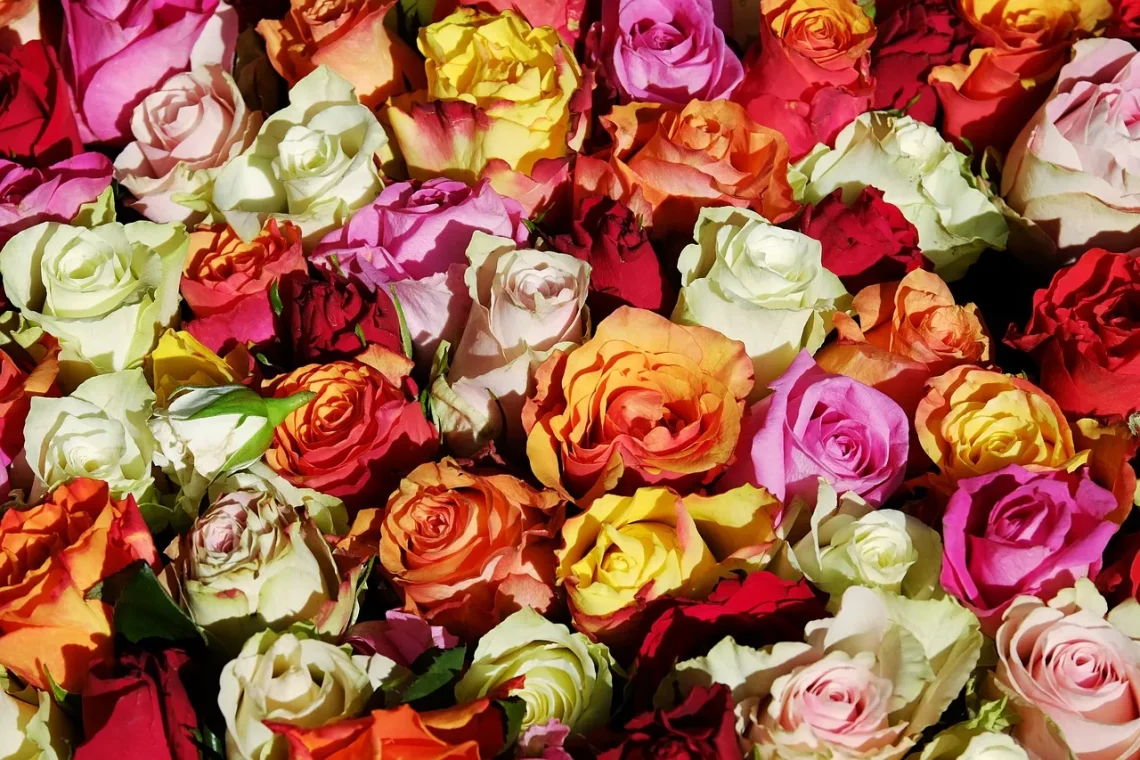
Exploring the Allure of Libertine Fragrance in Modern Perfume Culture
The world of fragrance is a complex tapestry woven from history, culture, and personal expression. Within this intricate landscape, libertine fragrances have carved out a significant niche, appealing to those who crave uniqueness and a bold sense of identity. These scents challenge conventional norms, inviting wearers to embrace their desires and express their innermost selves. The allure of libertine fragrances lies not only in their distinctive compositions but also in the lifestyle and philosophy they embody.
As society evolves, so too does the perception of fragrance and its relationship to personal identity. In an era where individualism is celebrated, libertine perfumes resonate with a growing demographic seeking to break free from societal constraints. They serve as olfactory declarations of freedom, often combining unexpected notes that defy traditional fragrance hierarchies. The journey through the world of libertine fragrances is not just about scent; it’s about the stories they tell, the emotions they evoke, and the statements they make in a world that increasingly values authenticity over conformity.
In exploring the allure of libertine fragrance, we delve into its historical roots, contemporary interpretations, and the powerful connection between scent and self-expression. This exploration reveals how libertine fragrances encapsulate a spirit of rebellion and creativity, making them a compelling choice for modern perfume enthusiasts.
The Historical Roots of Libertine Fragrance
The concept of libertinism has its roots in the 17th-century European courts, where the term referred to a lifestyle characterized by unrestrained freedom and indulgence in sensual pleasures. This movement was not merely about physical excess but also encompassed a philosophical quest for personal freedom and the rejection of societal norms. In this context, fragrance played a pivotal role in expressing individuality and status.
During this era, perfumes were not just accessories; they were essential elements of the lavish lifestyles of the aristocracy. Exquisite scents crafted from rare ingredients became symbols of wealth and power. The libertine ethos embraced the idea that fragrance could evoke desire, passion, and even rebellion against the constraints of polite society. This notion persists today, as modern libertine fragrances draw inspiration from this rich historical legacy.
Contemporary libertine perfumes often incorporate unconventional ingredients, blending floral and spicy notes with unexpected elements like leather, smoke, or gourmand scents. This reflects a broader cultural shift where the boundaries of masculinity and femininity are increasingly blurred. The historical context of libertinism reminds us that the allure of fragrance has always been tied to the celebration of individuality and the rejection of conformity.
As we explore the evolution of libertine fragrances, it’s essential to recognize how they challenge traditional fragrance classifications. They invite wearers to embrace complexity, mixing notes that might seem discordant but ultimately create a harmonious expression of personal identity. In this way, the historical roots of libertine fragrance continue to inspire a modern audience, encouraging them to explore their desires and assert their uniqueness through scent.
The Modern Interpretation of Libertine Fragrances
In today’s fast-paced world, the appeal of libertine fragrances has evolved, becoming a symbol of rebellion against the mainstream. Modern perfumers are increasingly drawn to the libertine ethos, crafting scents that celebrate individuality and self-expression. This contemporary interpretation often reflects a desire to break free from traditional expectations, allowing wearers to embody their true selves without fear of judgment.
Many modern libertine fragrances push the boundaries of olfactory innovation, blending unexpected ingredients to create unique scent profiles. For instance, fragrances that combine fresh citrus notes with deep, dark woods or smoky undertones challenge the conventional notions of how scents are categorized. This experimental approach resonates with a generation that values authenticity and seeks to express their multifaceted identities.
Moreover, the packaging and branding of libertine fragrances often mirror their bold compositions. Artistic bottle designs and provocative marketing strategies invite consumers to engage with the scent on a deeper level. This emphasis on aesthetic appeal and storytelling enhances the overall experience, making the act of wearing perfume a form of personal expression.
Social media has played a pivotal role in the rise of libertine fragrances, enabling niche brands to reach a global audience. Influencers and scent enthusiasts share their personal experiences with these fragrances, creating a community that celebrates individuality and diversity. This democratization of fragrance allows consumers to explore and experiment with scents that resonate with their unique identities.
In this modern landscape, libertine fragrances serve as a powerful tool for self-discovery. They encourage wearers to embrace their desires, explore their creativity, and reject societal expectations. By stepping into the world of libertine scents, individuals can craft their narratives and express their authenticity through the art of fragrance.
The Emotional Connection Between Scent and Identity
Fragrance is uniquely tied to memory and emotion, making it a powerful medium for self-expression. Libertine fragrances, in particular, evoke a sense of freedom and individuality, allowing wearers to craft their identities in a sensory manner. The emotional connection between scent and identity is profound; a particular fragrance can transport individuals to specific moments in their lives, encapsulating feelings of love, rebellion, or nostalgia.
When individuals choose a libertine fragrance, they are often making a statement about who they are or who they aspire to be. The bold, unconventional notes found in these perfumes can serve as a catalyst for confidence, allowing wearers to embrace aspects of themselves that may have been suppressed or overlooked. This emotional resonance is why many people form deep attachments to certain scents, often associating them with pivotal life experiences or personal transformations.
The ritual of applying perfume can also be a form of self-care, enhancing one’s mood and reinforcing self-identity. For many, selecting a libertine fragrance becomes an act of empowerment, a way to assert their presence in the world. Whether it’s a daring combination of spices and florals or a rich, intoxicating gourmand scent, the choices people make in fragrance reflect their inner selves and aspirations.
Moreover, the emotional landscape of libertine fragrances is enriched by their ability to provoke reactions in those around them. A unique scent can leave a lasting impression, sparking curiosity and intrigue. This interaction between the wearer and their environment reinforces the idea that fragrance is not just a personal experience but a shared one, creating connections and conversations that go beyond words.
In essence, the emotional connection between scent and identity is a central theme in the allure of libertine fragrances. They offer a pathway for individuals to explore their desires, express their authenticity, and connect with others on a deeper level. In a world that often seeks to categorize and define, libertine fragrances invite us to embrace our complexity and celebrate our individuality.
The Future of Libertine Fragrance in Perfume Culture
As the fragrance industry continues to evolve, the future of libertine perfumes looks promising. With an increasing emphasis on individuality and self-expression, libertine fragrances are poised to capture the attention of a broader audience. This trend aligns with a cultural shift towards embracing uniqueness, where consumers are encouraged to explore their identities through scent.
Sustainability is also becoming a significant consideration for modern consumers, and libertine fragrance brands are rising to the challenge. Many emerging perfumers are focusing on ethical sourcing of ingredients, eco-friendly packaging, and transparent production processes. This commitment to sustainability resonates with consumers who value authenticity and are keen to support brands that align with their values.
Furthermore, the rise of personalized fragrances offers an exciting avenue for libertine scents. Niche brands are beginning to experiment with bespoke fragrance experiences, allowing individuals to create custom blends that reflect their unique personalities. This level of personalization enhances the allure of libertine fragrances, making them even more relevant in a world where consumers seek to define their identities on their own terms.
As the conversation surrounding gender fluidity and inclusivity grows, libertine fragrances are likely to play a pivotal role in reshaping traditional notions of scent. By embracing a more fluid approach to fragrance, brands can tap into diverse audiences, fostering an environment where everyone feels represented and empowered to express themselves.
In conclusion, the future of libertine fragrance in modern perfume culture is bright. As consumers continue to seek out scents that reflect their individuality and values, libertine fragrances will remain at the forefront of this olfactory revolution. They serve as a reminder that fragrance is not merely about scent; it is an art form that encapsulates the essence of who we are and who we aspire to be.
This article is for informational purposes only and should not be considered medical advice. Always consult a healthcare professional for any health concerns.




